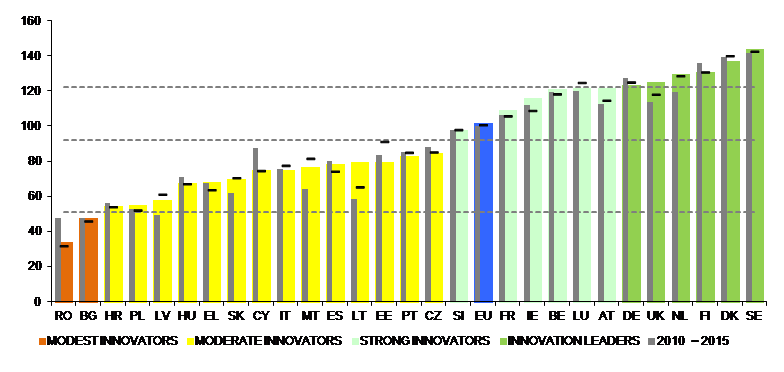This is one of the main findings of the latest Innovation Scoreboard published today by the European Commission. Overall, innovation performance has improved in 15 countries, though large differences exist between these Member States. Sweden remains the innovation leader while Lithuania, Malta, the Netherlands, Austria and UK are the fastest growing innovators. In a global perspective, the EU is catching up with Canada and the US, but South Korea and Japan are pulling ahead. China shows the fastest progress among international competitors.
Elżbieta Bieńkowska, Commissioner for Internal Market, Industry, Entrepreneurship and SMEs, said: “EU industry continues to innovate, but we are still lagging behind global innovation leaders. In times of globalisation and rapid technology changes, innovation remains essential for the prosperity of our citizens and the wider European economy. The Commission’s Start-up and Scale-up Initiative and New Skills Agenda aim to further improve an ecosystem for innovation to thrive.”
Carlos Moedas, Commissioner for Research, Science and Innovation, said: “The Scoreboard shows that still more can be done to improve research and innovation performance. That’s why we’re gearing up support to breakthrough innovators through the pilot European Innovation Council under the EU’s Horizon 2020 research and innovation framework programme.”

European Innovation Scoreboard 2017 country ranking
Axis Y: innovation performance in 2016 (coloured columns), 2015 (horizontal hyphens) and 2010 (grey columns) relative to EU average in 2010 – aggregate of 27 indicators
Axis X: EU countries
The 2017 EU Innovation Scoreboard, which is accompanied also by the Regional Innovation Scoreboard shows that:
- Sweden is once more the EU innovation leader, followed by Denmark, Finland, the Netherlands, the United Kingdom –for the first time an innovation leader- and Germany.
- In selected areas of innovation, the EU leaders are: Denmark – human resources and innovation-friendly environment; Luxembourg – attractive research systems and intellectual assets; Finland – finance and support; Germany – firm investments; Ireland – innovation in SMEs and employment impacts; Belgium – innovation linkages and collaboration; United Kingdom – sales effects.
- Regional innovative hubs exist also in moderate innovator countries, as shown by the Regional Innovation Scoreboard: Prague in the Czech Republic, Bratislava in Slovakia, and the Basque Country in Spain.
- Innovation performance has improved most in the area of international co-publications, broadband penetration, the number of university graduates and doctorates, and ICT training.
- Venture capital investments and the share of SMEs introducing innovations have been in strong decline.
- Over the next two years, innovation performance is expected to increase by 2%.
The 2017 edition of the Scoreboard uses a refined methodology, which better captures investments in skills, digital readiness, entrepreneurship, and public-private innovation partnerships. To allow performance to be tracked over time, the new methodology has also been applied to data from previous years (see comparison in graph above). The Scoreboard also includes guidance to improve the analyses and comparisons of structural differences between countries and regions.
Background
The annual European Innovation Scoreboard provides a comparative assessment of the research and innovation performance of the EU countries and selected third countries. An interactive online tool allows for custom comparisons of performance scores.
The Regional Innovation Scoreboard assesses the innovation performance of European regions. It replicates the methodology of the European Innovation Scoreboard to the extent possible in terms of data availability.
More information
Follow this news feed: EU





